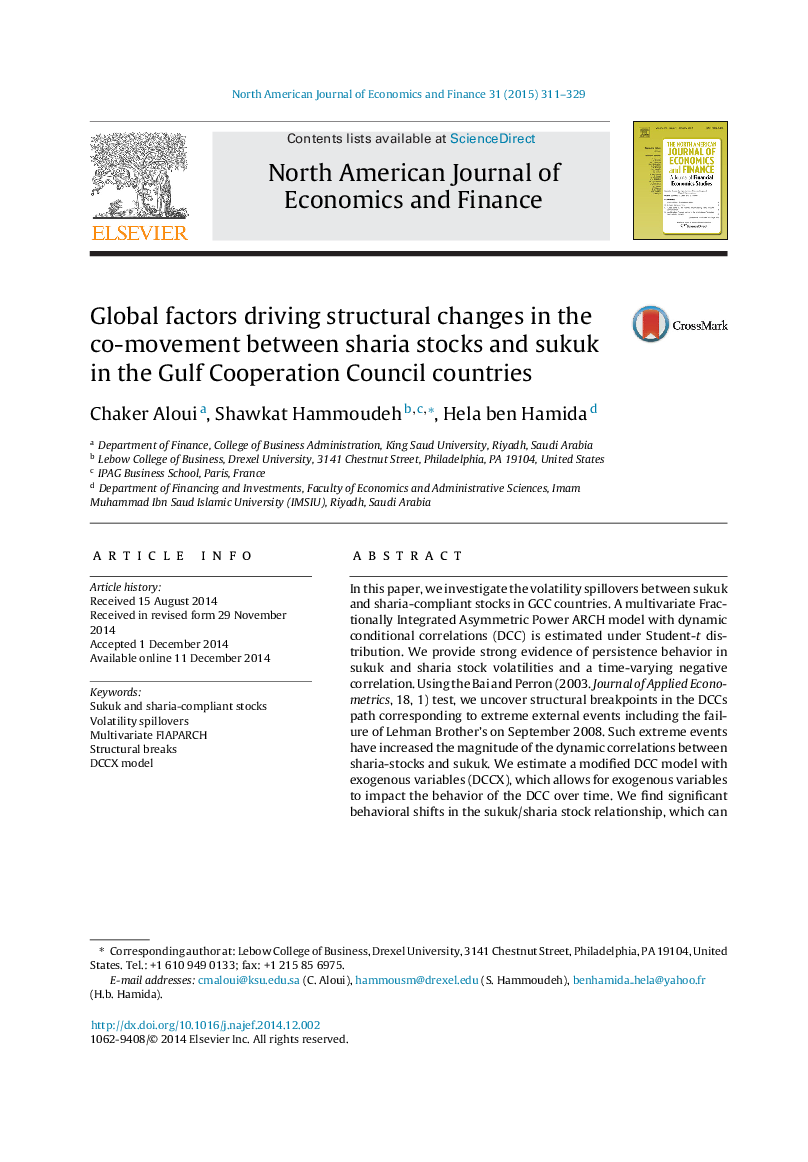| Article ID | Journal | Published Year | Pages | File Type |
|---|---|---|---|---|
| 973132 | The North American Journal of Economics and Finance | 2015 | 19 Pages |
•We employ DCC-FIAPARCH to investigate the interactive linkage between sharia stocks and sukuk.•The FIAPARCH model can capture the DCC between the two Islamic assets.•We uncover structural changes in the DCC paths corresponding to the global financial crisis.•Global external factors are CDS spreads, dollar exchange rate, crude oil price and trading volume.•The DCCX-MGARCH model reveals that the global external factors affect the DCC behavior.
In this paper, we investigate the volatility spillovers between sukuk and sharia-compliant stocks in GCC countries. A multivariate Fractionally Integrated Asymmetric Power ARCH model with dynamic conditional correlations (DCC) is estimated under Student-t distribution. We provide strong evidence of persistence behavior in sukuk and sharia stock volatilities and a time-varying negative correlation. Using the Bai and Perron (2003. Journal of Applied Econometrics, 18, 1) test, we uncover structural breakpoints in the DCCs path corresponding to extreme external events including the failure of Lehman Brother's on September 2008. Such extreme events have increased the magnitude of the dynamic correlations between sharia-stocks and sukuk. We estimate a modified DCC model with exogenous variables (DCCX), which allows for exogenous variables to impact the behavior of the DCC over time. We find significant behavioral shifts in the sukuk/sharia stock relationship, which can be explained by market liquidity, U.S. CDS spreads and crude oil prices. Our findings provide useful implications for Islamic fund managers operating in the GCC markets as well as for GCC policymakers.
